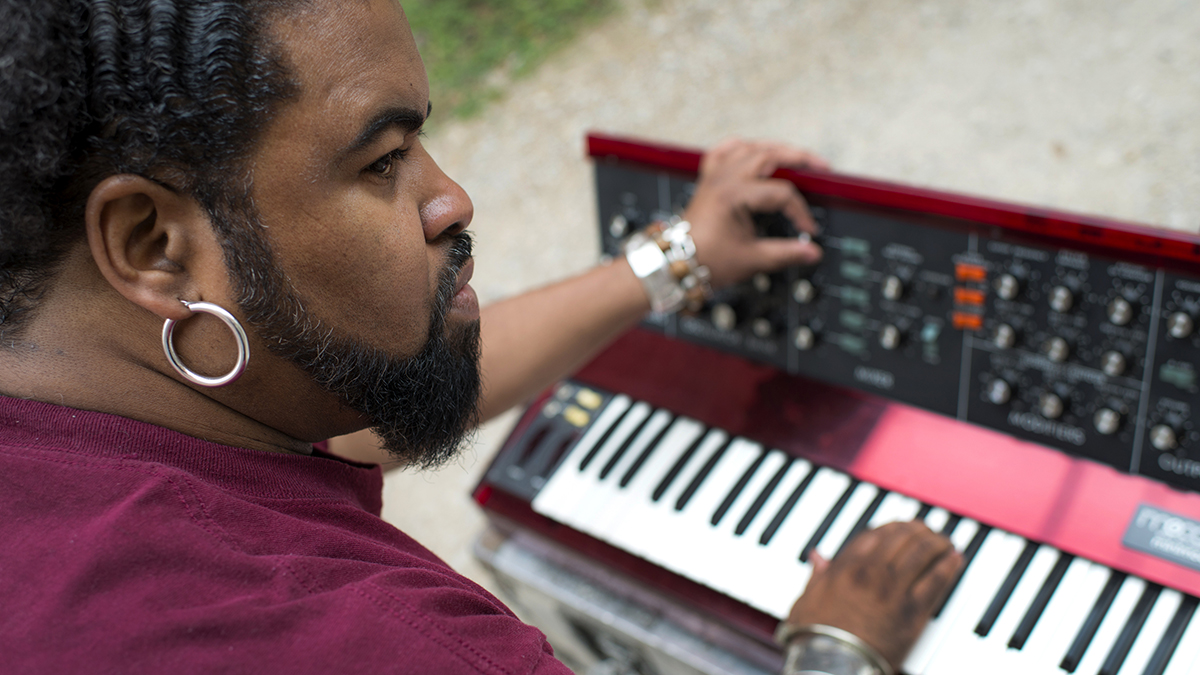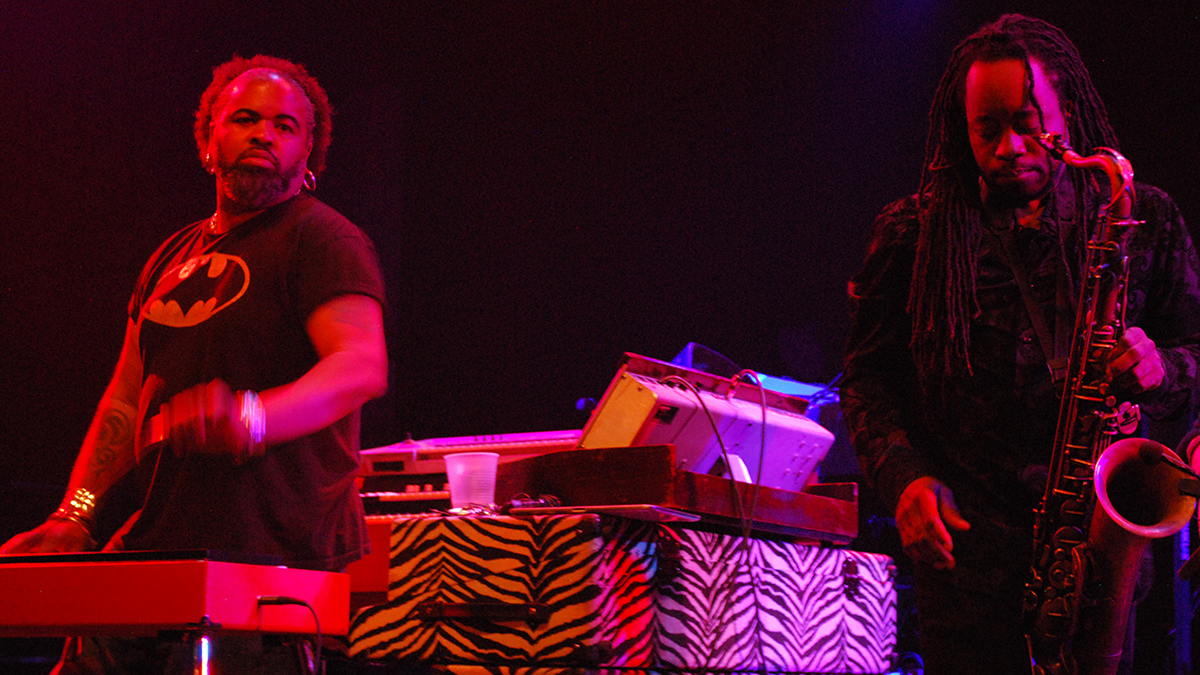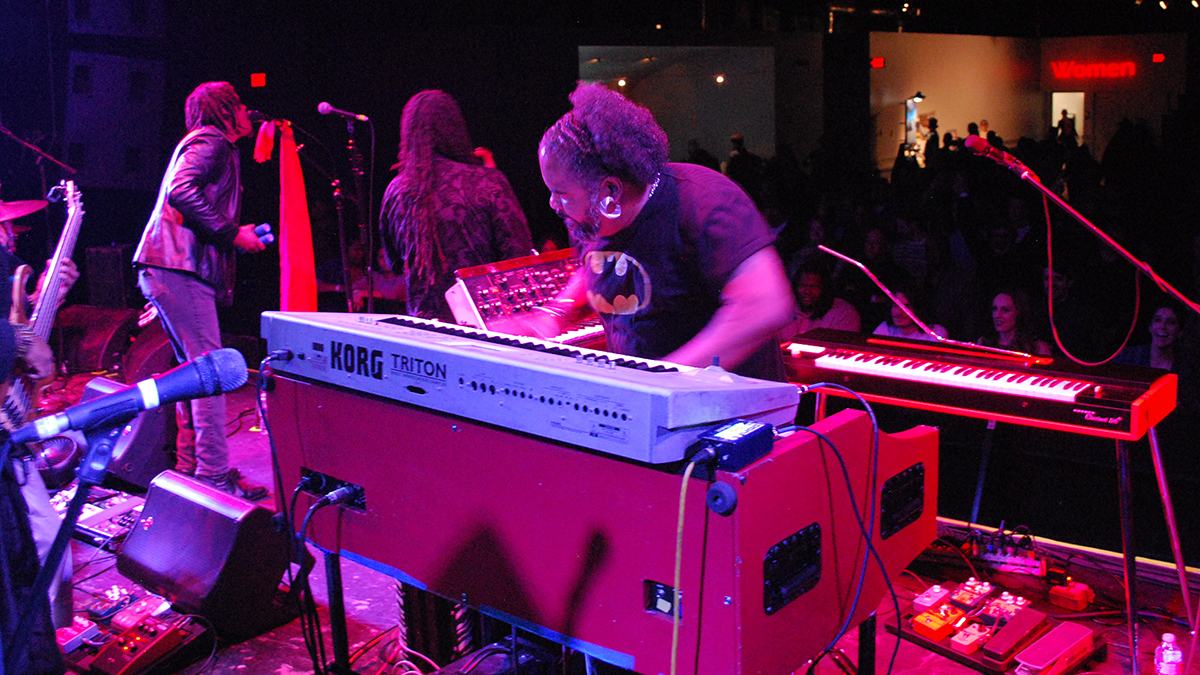Bobby Sparks II: “It’s better to invest in real instruments. The beautiful thing about owning all the originals is that I never have to keep buying computer stuff"
The story behind Sparks’ extraordinary electronic jazz fusion record Schizophrenia - The Yang Project

Born in Corsicana, Texas in the mid-1970s, Bobby Sparks II didn’t have far to look for musical inspiration, with his mother a gospel organist and father a jazz trumpeter. With the influence of soul, funk, jazz and RnB legends ringing in his ears, Sparks embarked on a career as a producer and performer, later becoming the side man for the likes of Prince, Nelly Furtado, George Benson and Lauren Hill.
Now, the virtuoso keyboardist has undertaken a more ambitious project, bringing together a tour de force of live musicians to create his own crowning achievement, Schizophrenia - The Yang Project. A kick-ass mix of funk, jazz and fusion, Sparks’ “secret weapon” was Dusseldorf native Simon Novsky, who melded rich orchestral string arrangements to complement the album’s stunning array of live musicianship.
What did you study at Eastfield College that your parents couldn’t teach you?
“I’m from a small town called Corsicana in Texas. When I moved to Dallas, we chose Eastfield College because it had a great jazz programme. In the early ‘80s, they would bring in Dizzy Gillespie and the Count Basie Big Band every year. The guy in the jazz department, Curt Bradshaw, was a trombone and piano player, and together with pianist Gary Freeman they were instrumental in making me who I am today.”
What did you learn from them?
“I was in all the bands - jazz bands, jazz rock and jazz fusion. Curt taught theory, but some of the best rhythm section guys in town also worked at that school. Gary Freeman also taught production.
“At that time, they had all the computer gear including the Macintosh stuff using Performer and all the latest keyboards, like the Yamaha DX7, Roland D-50 and an old Prophet-5. I veered towards those older synths - I think they had a Moog too.”
Want all the hottest music and gear news, reviews, deals, features and more, direct to your inbox? Sign up here.
Your music’s like a great movie - you never know what to expect next. Is that your philosophy, to keep people guessing?
“I just try to use my imagination rather than write a song like everybody else does. We all know how to write a pop song, but I like to walk into a room and start a painting without knowing what I’m going to paint. That makes everything feel exciting to me.”

What’s the concept behind Schizophrenia - The Yang Project?
“It’s me being a smart alec. I have another record called the Yin record, which is more for people in the United States that are into pop or RnB culture. Our culture doesn’t really love music, it gravitates to what we’re taught to like. The Yang Project is a more unorthodox way of making music.”
Did you write demos that were later fleshed out with a band?
“In the old days I had an Akai MPC60, a Korg Triton and all the MIDI gear, but now I write everything in Logic. Once I get the song how I want it, I start overdubbing everybody. I do electronic percussion that I’ll probably want to keep, but I always plan to use a real drummer.
“I might add pads or a few other background instruments in Logic, but the main instruments will always be overdubbed. I use the Minimoog for bass and the Prophet-5, Rhodes, Clavinet, Mellotron or the ARP Odyssey for all the other sounds.”
You have some big players on this record. Bassist Pino Palladino is one of the greats.
“Pino is a big friend of mine; I’ve known him for over 20 years. He came to Dallas with The Who and had a couple of days off, so we’d hang out at the clubs at night and go to cool food places during the day. We’d eat and then go to the studio and record 15 or 20 songs.”
Who else did you record with, and did you already have an idea in your head what they could bring to specific tracks?
“We also have bassist Marcus Miller, jazz trumpeter Roy Hargrove, and Mark Simmons - one of the greatest drummers I know. He played with George Duke and Al Jarreau. I have guitarist Mark Lettieri who played with Snarky Puppy, and Allen Cato, who did 70% of the rhythm guitar on this record.
“I’ll listen to the style of a song and figure out who I need to use for each. It’s like running a football team - you need certain types of players to suit a system.”
What about vocals?
“I call Donessa N Perry the ‘insane vocal society’ because she’s the only vocalist I know that can do anything she wants from jazz to classical and opera to gospel. She is the best background vocalist.”
Did you all jam out tracks together?
“That would be the perfect way to do it. If the record label had given me £100k to do this record I’d have flown everybody out to my favourite studio in El Paso, Texas. Instead, I had to do it the best way I could.
"My demos were recorded to Pro Tools and I’d take my computer and microphone with me out on tour and meet up with musicians so they could play on stuff. For example, I set up my computer in Marcus Miller’s hotel room and he just plugged his bass into it and played.”
Astonishingly, you can’t really tell…
The drummers I use know how to be dynamic, not just play a bunch of shit.
“I tried to use musician’s that are sensitive. When you play, it’s all about imagining. The drummer is the most important part of the band, if he’s no good, the songs are no good and the band’s no good.
"The drummers I use know how to be dynamic, not just play a bunch of shit. Then I’ll bring in other musicians who know how to use their imagination and have their own voice – I don’t want anybody that sounds like someone else.”
You have orchestral arrangements weaved into the production, which sound terrific.
“I’m a student of music, so I love strings and orchestra, it’s beautiful. When I listen to the old Bob James records, there were horns and a 50-to-70-piece orchestra. It was lush and he would just play around it, that inspired me.
"Old Barry White records are also orchestral and I wanted to try and bring that back. Nowadays, music’s not that important anymore and people always want to do everything on the cheap. It’s basically a money situation.”
Are orchestral elements tricky to assimilate into tracks already rich with musicality?
“It’s about finding the space. I was recommended a guy called Simon Novsky but was wary because I didn’t want to use samples. But the samples he used were killing, so I said let’s do it and it was a blessing. He’s using very sophisticated stuff in Logic.”
The production’s very rich and sounds complicated to mix?
“It’s hard. You have to take things out at certain points so the music can breathe. The challenge is to look at the big picture and figure out which parts need to be heard. Panning is everything. That’s how you get parts to breathe in a mix.
"I used Chris Godby, who mixed Michael Jackson’s last record and Timberland, Bob Brockman, who mixed Puffy, Mary J. Blige and Herbie Hancock’s Possibilities and Nick Heart who mixed for Snarky Puppy. Just like I pick musicians, I know the sound of the song I want and each engineer has a different sound concept.”
The track Islam, in particular, is a great fusion of past and present. What was the process behind that one?
“I went to Bahrain and got inspired by the music there and how they were praying. When I came back to the United States, I was excited. I thought about making a pop song, but then I worked with Simon Novsky and we turned it into this electronic symphony.”

Now I need to start at the bottom like any other band and pay out of my own pocket for these guys to come out on the road with me and build an audience
You still use the Hammond B-3 organ. Is that because you’re nostalgic or is the sound irreplaceable?
“It’s better to invest in real instruments. The beautiful thing about owning all the originals is that I never have to keep buying computer stuff, or the new Korg Kronos. All these keyboards are doing is emulating a Fender Rhodes, a Hammond B-3, a Minimoog Model D or a Prophet-5. I have Spectrasonics Keyscape on my computer, so I can get a great Rhodes sound when I’m writing in a hotel room, but I don’t have to keep up with technology when I’m in the studio.”
Do you have a specific outboard chain for recording live instruments?
“I use a lot of pedals, like the Space Echo or an old Echoplex delay. On the road I’ll use a Mu-Tron Bi-Phase and a Clavinet. When I go into Pro Tools, I’ll only use software if I’m trying to get a certain sound.”
Presumably you’ll be taking this album out on the road at some point?
“Absolutely. I’ve always been a side man but I have a curse. My curse is that I’ve always been working since I was 16 years old. Yes, I always had money in my pocket, but the curse was that I never created anything for myself. Now I need to start at the bottom like any other band and pay out of my own pocket for these guys to come out on the road with me and build an audience. I’ve never played Europe under my own name.”
Bobby Sparks II Schizophrenia - The Yang Project is out now on Leopard Music. For more information check out Bobby’s Facebook page.